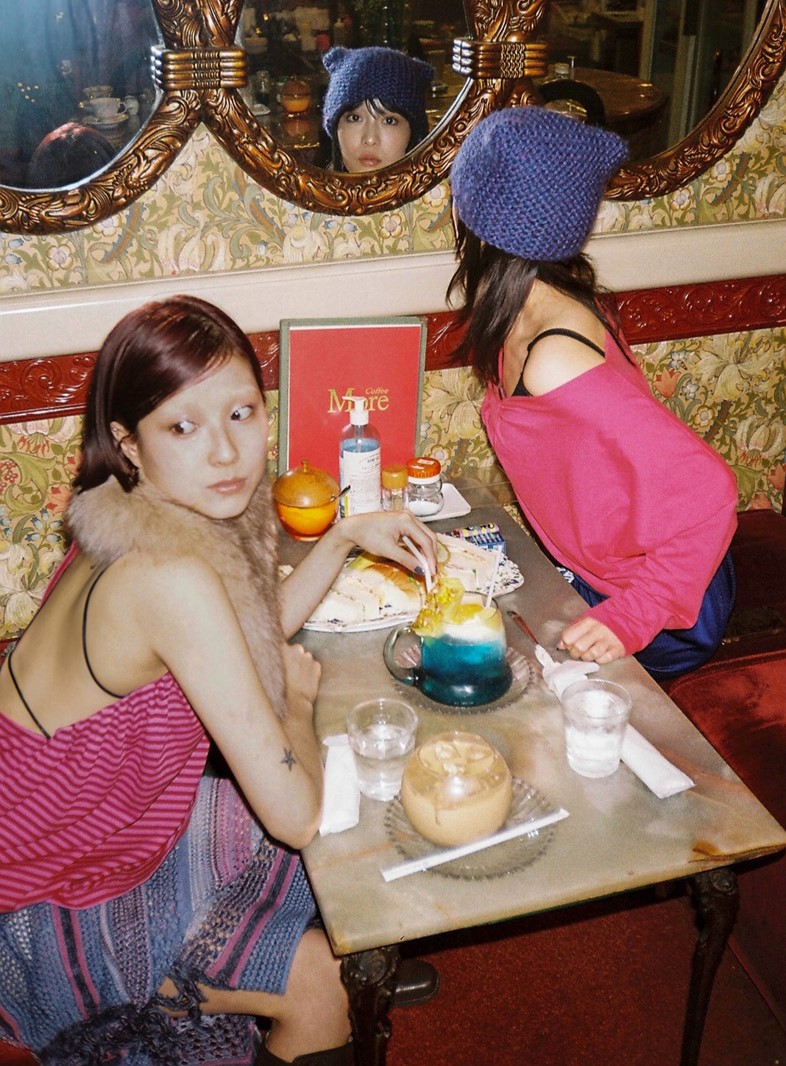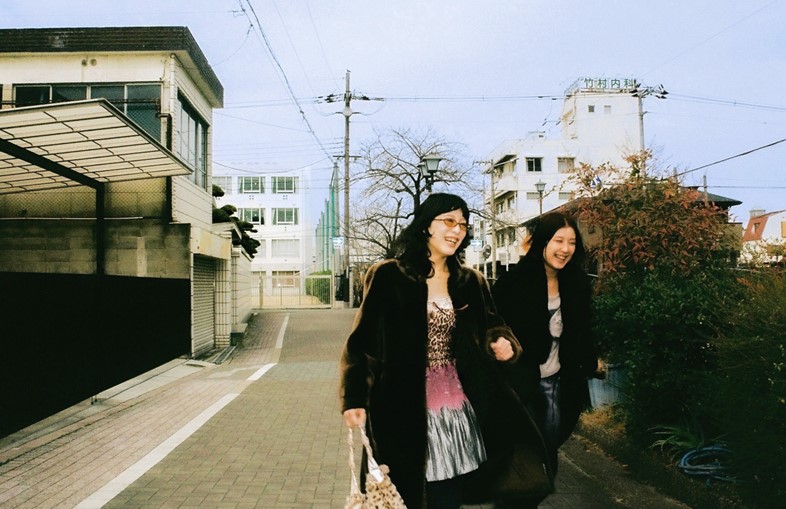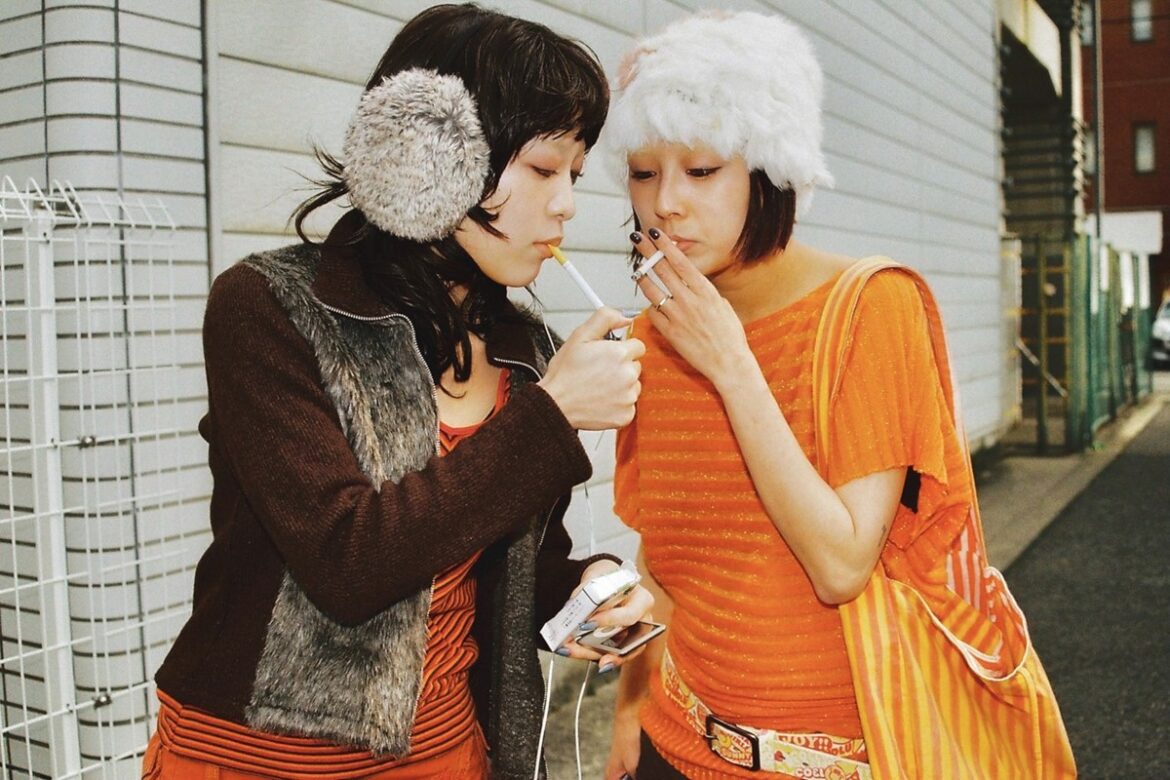Erika Fujiwara and Ellie Aoki, The World’s Playtoy16 Images
“Japan has become the world’s playtoy – a dream destination reduced to a hyper-curated fantasy,” says the photographer Ellie Aoki, one half of the Osaka-based creative pair behind the photo series The World’s Playtoy. “The West sees Japan as a neon-lit fever dream, surreal aesthetics, a playground for anime otakus and the birthplace of many subcultures.” In collaboration with creative director and stylist Erika Fujiwara, Aoki sets out to challenge the mythologised and reductive lens through which Japan is so often viewed, capturing the magic of Osaka both from a female perspective and outside of the tourist’s gaze.
Tokyo is often considered the fast-paced beating heart of Japan, as well as its creative capital. Osaka, by contrast, is slower, known for being kuuki yomena, or unafraid to break social expectations. “Osaka is different – it’s the kind of place where strangers strike up conversations on the street. That rare sense of connection feeds directly into our creativity – it’s community-driven, heartfelt, and real,” Fujiwara tells Dazed. It was in this vein that the two creatives chose to collaborate. Aoki adds: “Most opportunities are centred in Tokyo, but there’s a thriving, underrepresented scene in Osaka too.”
The West sees Japan as a neon-lit fever dream, surreal aesthetics, a playground for anime otakus and the birthplace of many subcultures – Ellie Aoki
Inspired by the vivid visuals of Petra Collins and Juergen Teller’s Go-Sees, the series embraces the raw and unpolished beauty of a girl’s everyday life, intimate and authentic. Two girls stand in front of an ornate altar; they laugh against the architecturally layered streets of Osaka, smoking cigarettes; they relax in bed together, listening to music and reading magazines. The photos are warm, familiar, testament to the unique softness and intricate depth of female friendship, consolidated through rituals of the quotidian. At its core, the project is about disrupting the spectacle. “No gloss – just real moments, real girls, real texture,” Fujiwara tells Dazed.
“Japanese people see tourism as something separate, like it exists in a parallel world. It’s rarely questioned or talked about, we just carry on. Through this series, we wanted to highlight the lives of ordinary Japanese girls, and the kind of beauty we find not in spectacle, but in the ‘mundane’, unseen parts of daily life,” says Aoki.
“Daily life here is rhythmic,” says Fujiwara. “Laundry is hung outside with care, hands come together in morning prayer to offer respect to ancestors. Meals begin and end with gratitude – Itadakimasu and Gochisousama deshita. These collective cultural gestures and rituals are so deeply woven into the day that they almost go unnoticed. They’re instinctive.”
 Photography Ellie Aoki, Styling Erika Fujiwara
Photography Ellie Aoki, Styling Erika Fujiwara
Instinct aside, Aoki and Fujiwara take a radical approach to the project, highlighting moments typically shielded from public view, creating both a tension and an emotional resonance. “Photographing someone at the altar, something that is deeply private and may be considered taboo, was a conscious and provocative decision,” says Aoki. Fujiwara adds: “We knew it could be seen as distasteful or uncomfortable, but that’s part of the point. By subtly illuminating cultural taboos, we begin to push boundaries, inviting conversation that has previously gone unsaid.”
“Japan is so frequently glorified by travellers, yet like any place, it carries its own unspoken struggles,” Fujiwara continues. “Beyond what’s seen as a wonderland to newcomers lies a quieter, more complex reality that often goes unnoticed.”
Daily life here is rhythmic. These collective cultural gestures and rituals are so deeply woven into the day that they almost go unnoticed. They’re instinctive – Erika Fujiwara
And these struggles are multifold, from the loss of cultural identity through the global commodification of hyper-tourism to the threat of girls and women subject to the male gaze. The World’s Playtoy is their perspective, their response, their reclamation. Aoki say, “That’s why art matters, it slows things down, brings nuance back into the conversation, and gives us space to tell our own stories on our own terms.”
“It was really important that this series came from the female gaze. In Japan, the male gaze can feel quite intense and invasive, part of The World’s Playtoy was about reclaiming the space for girls and women,” says Fujiwara. “People stare, and in some cases, that attention can cross boundaries. Women being harassed isn’t that uncommon. Being followed, approached, verbally harassed.” Aoki confers: “That’s part of why women-only train carriages exist and why all phones make a shutter sound when taking a photo. To prevent men from taking non-consensual pictures of women.”
 Photography Ellie Aoki, Styling Erika Fujiwara
Photography Ellie Aoki, Styling Erika Fujiwara
Fujiwara stylistically referenced Osoro Kōde, meaning matching outfits, a popular trend amongst young people, deviating from tradition to mirror the evolution of modern girlhood. The girls aren’t dressed identically – furs that don’t match, similar colours, differing patterns. “I wanted the clothes to look more like sisters, not twins,” she says. “Rather than replicating that completely, I reimagined the tradition by intertwining the outfits through a shared palette. It still reflects that sense of closeness and synchronicity, but in a more nuanced light.”
“The focus was on portraying girlhood and femininity from our perspective – soft, familiar, intimate and honest,” says Fujiwara. “Maybe it’s something we can all relate to, whether it’s two friends flipping through magazines or getting dressed up to go to a kissaten. Girls capturing girls.” From anime to idol culture, where portrayals of girls and women can sometimes veer into objectification or infantilisation, the male gaze remains a visible force in Japanese visual culture. But the female gaze is gaining momentum – particularly in art and fashion – as artists like Aoki and Fujiwara offer alternative perspectives that challenge these norms and expand the visual language of femininity.
Visit the gallery above for a closer look.


AloJapan.com